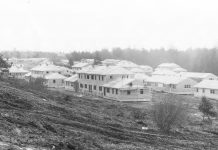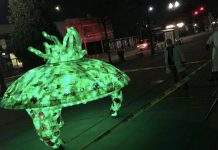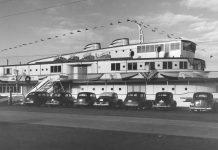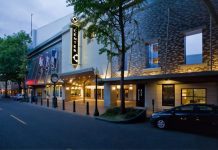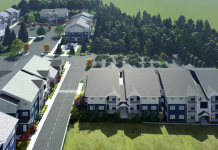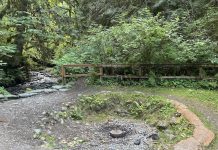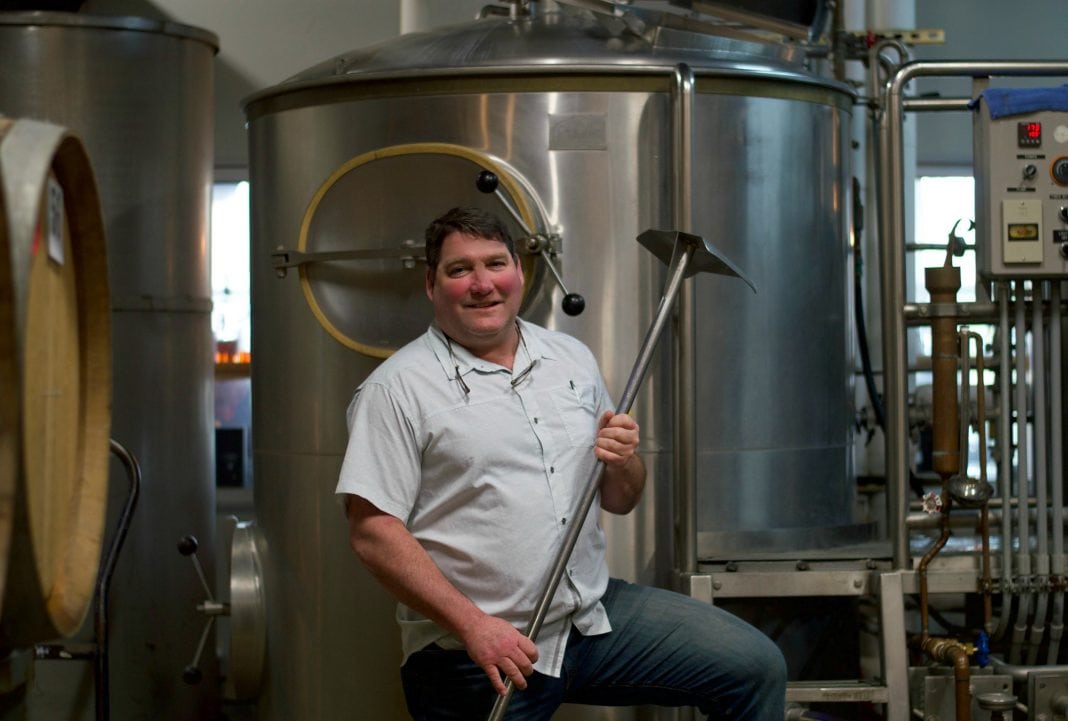For more than 20 years, the South Sound has been indulging in craft beer that is rich with Tacoma’s history. The Harmon Brewery began with one man’s idea and a beautiful brick building. Pat Nagle, a Tacoma native, opened the doors to the iconic Harmon Brewery on Pacific Avenue in 1997, and Tacoma’s very first microbrewery was born.
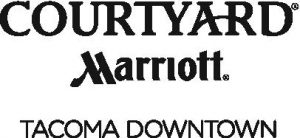 Nagle, a medical salesman at the time, made a trip home from Eastern Washington and took a drive into downtown Tacoma. “When I grew up in the ‘80s, we didn’t go downtown, there just wasn’t anything going on,” Nagle said. News of more businesses migrating into the downtown area began to spread. The Washington State History Museum was planning to leave its original location in the Stadium District, the University of Washington was moving classrooms into the historic Perkins Building, and downtown was slowly making its mark on the map. “So I drove down in that neighborhood and the Harmon Building really stood out to me,” Nagle recalled. “This big, tall, brick building… What a great building. I had noticed there were a lot of microbreweries popping up in Seattle, Portland and even Olympia, but Tacoma seemed to be the only place without a microbrewery restaurant.”
Nagle, a medical salesman at the time, made a trip home from Eastern Washington and took a drive into downtown Tacoma. “When I grew up in the ‘80s, we didn’t go downtown, there just wasn’t anything going on,” Nagle said. News of more businesses migrating into the downtown area began to spread. The Washington State History Museum was planning to leave its original location in the Stadium District, the University of Washington was moving classrooms into the historic Perkins Building, and downtown was slowly making its mark on the map. “So I drove down in that neighborhood and the Harmon Building really stood out to me,” Nagle recalled. “This big, tall, brick building… What a great building. I had noticed there were a lot of microbreweries popping up in Seattle, Portland and even Olympia, but Tacoma seemed to be the only place without a microbrewery restaurant.”
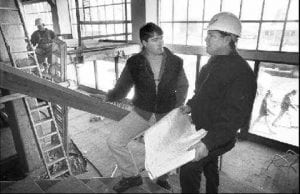
That old brick building left a lasting impression on Nagle and an idea was born.
Although Nagle didn’t grow up in the business, he’s taken a nod from generations past. His grandfather owned the iconic Frank & Mike’s Tavern on 6th Avenue in Tacoma, which is now home to O’Malley’s Irish Pub, and generations prior to that, his great-great-grandfather by the name of John Buffo opened the historic Brick Tavern in Roslyn, Washington in 1898.
Originally built in 1908, the Harmon Building was known as the F.S. Harmon Manufacturing Company, which produced more furniture than any other city in the United States in its time and employed hundreds of locals. Not long after Nagle’s drive downtown, he had read that a man by the name of Fred Roberson had just purchased the building, and was planning to put in apartments and preserve the historical structure.
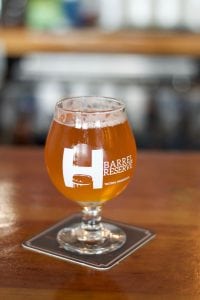
“I made a phone call and we just started a dialogue,” Nagle said. “I told him I think this would be a great building for a brew pub,” and Fred loved that idea. “One thing led to another and a buddy of mine called me up and said I understand you’re working on this project. I’ve got this friend who has a brewery down in California and you should meet him.” Nagle flew down the coast and the rest was history. “We formed this partnership in 1995, so it was me and these two older guys who were in their mid-60s, while I was only 31-years-old.”
In September of 1997, the same month as UW Tacoma’s very first fall semester, the Harmon Brewery opened its doors to their new 8,000-square-foot home with a 15-barrel brewing system.
The Harmon, sticking true to its roots, was themed after the great outdoors of the Pacific Northwest. Nagle had envisioned opening the brewpub as a sort of basecamp for its patrons, where they could retreat after a long day in the mountains. “I wanted it to be the place you want to go after a hike, a bike ride or an adventure. The place where you go and feel good about the fact that you just put a sweat on and earned that beer,” he explained. “When I first opened the Harmon, I was much younger and more active up in the mountains. I had just climbed Mount Rainier not too long before opening and did some training up at Pinnacle Peak, which is where the Pinnacle Pale Ale originated from.” The Harmon’s flagship Mt. Takhoma Blonde was also named in tribute to the mountain, among the Puget Sound Porter and Point Defiance IPA, which are named after local landmarks.
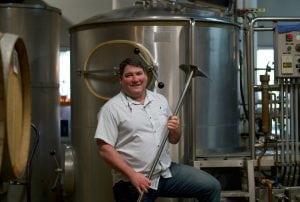
Nearly a decade later, downtown Tacoma came to life with new businesses, becoming a desirable destination. The Tacoma Art Museum and Museum of Glass were new to the neighborhood, as well as Tacoma’s light rail system and a variety of shops lining Pacific Avenue. In 2008, Nagle and his partner Carole Holder took on a new adventure opening up The Hub in Tacoma’s historic Stadium District. “When we opened The Hub, we said, okay, this is going to be something different.”
Putting a twist on the traditions of the Harmon, The Hub kept their active outdoor theme, but incorporated a family-friendly, Mediterranean flair. “We leaned towards the pizza, pasta and Mediterranean dishes that we were doing while thinking of Europe, cycling, the Tour de France, the hub of a wheel,” Nagle said. “We had just started a bike team at the Harmon to ride in the Courage Classic, and when we started the club, we just sort of moved it up to The Hub for our weekly rides.”
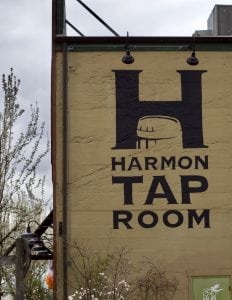
The name of the restaurant was suggested from a member of the bike team, and the rest was history. Since opening almost 10 years ago, Nagle and Holder have opened two other Hub restaurants located in Gig Harbor and South Hill, keeping their Mediterranean bicycle theme prominent at each restaurant.
Nagle’s dream of creating a basecamp for local beer lovers grew into something so much more. Over the course of the last 20 years, the Harmon and Hub restaurants have become South Sound sanctuaries, providing their patrons with locally sourced, award-winning craft beers, great food, and a place to kick back and relax after long day outdoors. The Harmon has watched Tacoma grow significantly over the years, becoming a staple in the downtown community, and it all started with one man’s idea and a beautiful brick building.
The Hub will be celebrating its 10th anniversary on May 18, 19 and 20, 2018, at their Tacoma location. Stop by for great brews, barbecue, and live music in their beer garden, or take a spin on a Saloon Cycle where you can drink craft beers as you pedal and are guided around the Historic Stadium District.





